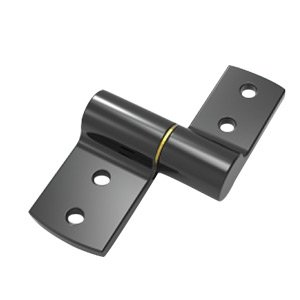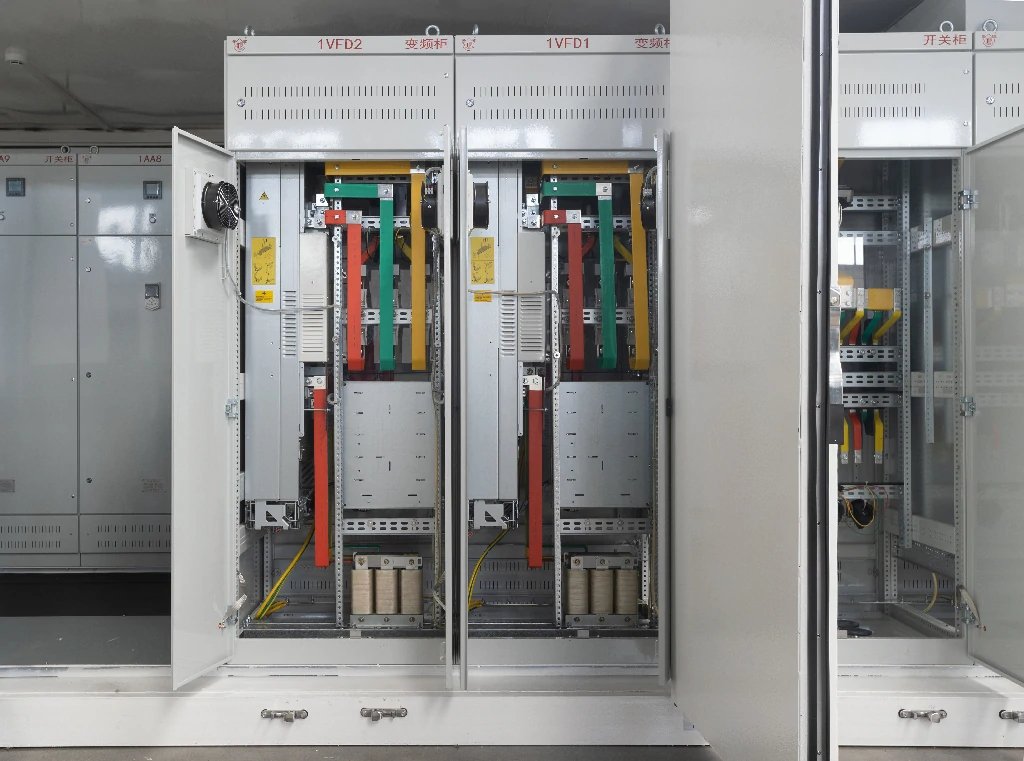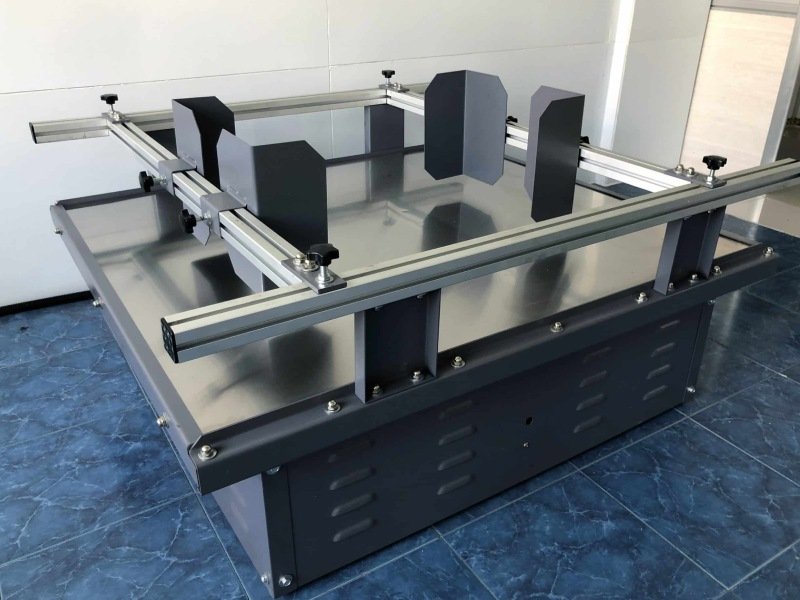When precision and controlled movement are crucial in product design, torque hinges provide the perfect solution. Unlike regular hinges, torque hinges offer resistance to movement, holding objects like lids, screens, or panels at any angle without requiring external support. In this comprehensive guide, we'll explore everything you need to know about torque hinges, including their types, applications, how they work, how to calculate the required torque, and tips for selecting the right one for your project.
What Is the Torque Hinge?
Torque hinges, also referred to as friction or position control hinges, are specialized hinges that use friction or resistance to control the pivoting movement of objects. Unlike traditional hinges that simply allow free rotation, torque hinges resist motion to maintain an object's position without it falling back or forward under its own weight.
For instance, in devices like laptop screens, the hinge ensures that the screen remains in the desired position, even when you stop applying pressure. This eliminates the need for any supporting structure or manual effort to keep the object in place, making them extremely useful for applications that require precision and reliability.
What Are the Common Applications of Torque Hinges?
Torque hinges have a wide range of applications across different industries due to their ability to provide controlled movement and positioning. Here are a few common applications where torque hinges are essential:
- Consumer Electronics: Devices like laptops, tablets, and foldable phones rely on torque hinges to hold their screens or components at specific angles.
- 의료 장비: In healthcare, torque hinges are found in adjustable hospital beds, examination tables, and diagnostic equipment to provide precise movement and positioning for patients and healthcare professionals.
- Automotive: In vehicles, torque hinges are used for compartments, sun visors, and armrests to allow smooth operation and keep them in place during use.
- Aerospace: Aircraft interiors use torque hinges in overhead compartments, tray tables, and control panels to ensure controlled movement and safety.
- 산업 장비: Heavy-duty torque hinges are often employed in machinery or industrial enclosures to control access panels or lids.
Different Types of Torque Hinges
Torque hinges come in various types, each designed to cater to different requirements of motion control and positioning. Below are the main types of torque hinges:

Decent (Fixed)Torque Hinges
Decent torque hinges are designed to offer controlled resistance primarily in one direction—usually when closing. These hinges prevent panels, lids, or other objects from slamming shut by applying smooth resistance to the closing motion. For example, in a tool cabinet, the lid can close gently without falling suddenly, which protects both the user and the contents inside.
Adjustable Torque Hinges
Adjustable torque hinges offer the flexibility of modifying the torque or resistance level to suit different applications. These hinges allow users to manually adjust the amount of friction within the hinge, which is particularly useful for applications where the load may vary or where fine-tuning of the motion control is necessary over time. Adjustable torque hinges are ideal for equipment that may change in weight or for testing environments where variables change frequently.
Bi-Directional Torque Hinges
Bi-directional torque hinges provide resistance in both opening and closing directions. This means that regardless of whether you're lifting or lowering the lid or door, the hinge will offer resistance, allowing for precise control in both motions. These are commonly used in equipment like foldable displays, automotive compartments, or medical devices where maintaining stable control in both directions is critical.
One-Way Directional Torque Hinges
One-way directional torque hinges provide friction only in one direction, allowing the object to remain stationary in that direction. For instance, a hinge could resist downward movement while allowing free upward motion. These are often used in applications where free movement is needed in one direction but controlled resistance is required in the opposite direction, such as in folding panels or lids that need to stay open once lifted.
How Much Torque Is in a Hinge?
The amount of torque in a hinge determines how much force is needed to rotate an object around its axis. In simple terms, torque is the measure of rotational force applied to an object. When selecting a torque hinge, it’s essential to calculate the required torque to ensure that the hinge can hold or move the object as intended.
The formula to calculate torque is:
Torque (T) = (L/2) × mass (kg) × 9.8 N
Where:
- L is the length of the object (door or panel) from the hinge to its farthest edge.
- Mass is the weight of the object.
- 9.8 N is the gravitational constant, accounting for the force of gravity.
For example, if you have a lid that is 1 meter long and weighs 5 kg, the torque required would be:
T = (1/2) × 5 × 9.8 = 24.5 N.m
This means you would need a torque hinge rated for at least 24.5 Newton-meters to handle the load effectively.
How to Calculate the Right Amount of Torque for Your Hinge
To calculate the proper torque for your specific application, follow these steps:
- Measure the object: Determine the dimensions and weight of the object that will be supported by the hinge (e.g., the length and weight of a door or panel).
- Find the center of gravity: The center of gravity is typically located at the midpoint of the object.
- 다음 공식을 적용하세요.: 위에 제공된 토크 공식을 사용하여 필요한 토크의 양을 계산하세요.
- 올바른 힌지 선택: 물체를 무리 없이 지탱하는 데 필요한 토크를 제공할 수 있는 경첩을 선택하세요.
또한 힌지의 사용 빈도, 환경 조건(온도, 습도 등), 안전 마진과 같은 요소를 고려하여 시간이 지나도 안정적인 성능을 보장하는 것이 중요합니다.
토크 힌지는 어떻게 작동하나요?
토크 힌지는 마찰력 또는 기계적 저항을 사용하여 도어, 뚜껑 또는 패널의 회전을 늦추거나 방지하는 방식으로 작동합니다. 힌지 내부의 내부 구성 요소가 마찰을 발생시켜 물체의 움직임에 저항을 일으킵니다. 이를 통해 힌지는 외부 지지대 없이도 특정 각도로 물체를 고정할 수 있습니다.
일부 토크 힌지는 스프링이나 기계 요소를 사용하여 이 저항을 생성하는 반면, 다른 힌지는 특별히 설계된 마찰판이나 부싱을 사용하여 동작을 제어합니다. 저항(토크)의 양은 힌지의 디자인, 재료 및 구조에 따라 달라집니다.
토크 힌지의 장단점
장점:
- 정밀한 제어: 토크 힌지를 사용하면 물체의 움직임과 위치를 정밀하게 제어할 수 있습니다. 이는 작은 조정이 큰 차이를 만드는 전자 제품이나 의료 장비와 같은 애플리케이션에 필수적입니다.
- 핸즈프리 작동: 토크 힌지 덕분에 외부 지지대나 잠금 장치가 필요 없으므로 도어나 뚜껑을 핸즈프리로 제자리에 고정할 수 있습니다.
- 부드러운 모션: 마찰 메커니즘이 부드럽고 점진적인 움직임을 보장하여 갑작스럽거나 갑작스러운 동작을 방지합니다.
단점:
- 시간이 지남에 따라 마모: 소재와 디자인에 따라 토크 힌지가 마모되어 효율성이 떨어질 수 있습니다. 마찰 기반 구성 요소는 특히 자주 사용하면 마모되기 쉽습니다.
- 비용: 토크 힌지는 일반적으로 특수한 디자인과 기능으로 인해 기존 버트 힌지보다 가격이 비쌉니다.
- 복잡성: 토크 힌지를 설치하거나 조정하려면 특히 복잡한 기계나 고정밀 장치에서 단순 힌지에 비해 더 많은 전문 지식이 필요할 수 있습니다.
토크 힌지 대 버트 힌지: 차이점은 무엇인가요?
토크 힌지와 버트 힌지는 서로 다른 용도로 사용되며 서로 다른 애플리케이션에 사용됩니다. 다음은 비교입니다:
- 토크 힌지: 마찰 기반 저항을 제공하여 물체가 어떤 각도에서도 제자리에 고정될 수 있도록 합니다. 전자 제품, 자동차 부품, 의료 기기 등 제어된 동작이 필요한 애플리케이션에 사용됩니다.
- 엉덩이 경첩: 도어와 패널을 자유롭게 열고 닫을 수 있는 간단한 피벗 포인트를 제공하는 전통적인 힌지입니다. 일반적으로 제어된 저항이 필요하지 않은 집, 캐비닛, 문 등에 사용됩니다.
비교: 토크 힌지는 움직임 제어와 정밀한 위치 지정이 중요한 애플리케이션에 이상적이며, 버트 힌지는 단순한 개폐 기능에 더 적합합니다.
토크 힌지 선택 시 고려해야 할 요소
프로젝트에 사용할 토크 힌지를 선택할 때는 다음 요소를 고려하세요:
- 부하 용량: 경첩이 물체의 무게와 치수를 지탱할 수 있는지 확인합니다.
- 토크 요구 사항: Calculate the necessary torque based on the object's size and weight to ensure proper functionality.
- 재료: 환경에 적합한 재질로 만들어진 힌지를 선택합니다(예: 부식성 환경 또는 고온용 스테인리스 스틸).
- 크기: 힌지는 프로젝트의 디자인 제약 조건에 맞아야 합니다.
- 주기 수명: 힌지를 몇 번이나 사용할지 고려하세요. 일부 애플리케이션에는 마모되지 않고 수천 또는 수백만 사이클을 견딜 수 있는 경첩이 필요합니다.
토크 힌지의 설계 고려 사항
토크 힌지를 디자인에 통합할 때는 다음 사항을 염두에 두세요:
- 힌지 배치: 경첩이 물체 전체에 하중이 고르게 분산되도록 배치되었는지 확인합니다.
- 환경 조건: 실외 또는 열악한 환경에서는 스테인리스 스틸 또는 양극산화 알루미늄과 같은 부식 방지 소재로 제작된 경첩을 선택하세요.
- 운영 조건: 시간이 지남에 따라 힌지 성능에 영향을 미칠 수 있으므로 사용 빈도, 먼지나 화학 물질에 대한 노출, 온도 변화를 고려하세요.
요약
Torque hinges are essential components in modern engineering and design, offering precise control over the movement of objects. Whether you're designing a laptop, medical device, or industrial panel, selecting the right torque hinge involves understanding the specific needs of your application. By considering factors such as load capacity, torque requirements, and environmental conditions, you can ensure long-lasting, reliable performance.
토크 힌지는 제어된 핸즈프리 이동에 이상적이며, 기존의 버트 힌지는 단순하고 자유롭게 움직이는 도어와 패널에 가장 적합합니다. 작업에 적합한 힌지를 사용하면 프로젝트의 기능과 내구성이 향상됩니다.









